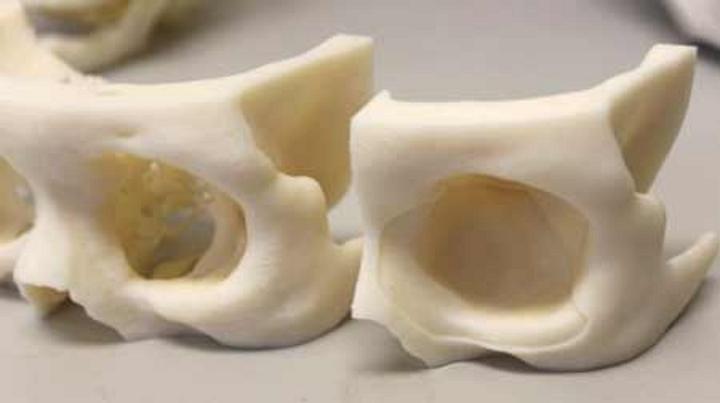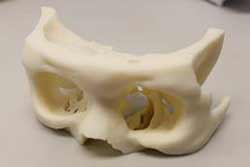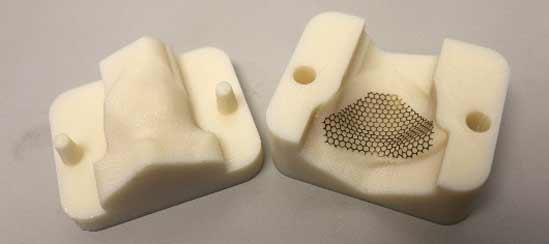 An orbital fracture is a traumatic injury to the bone of the eye socket, usually occurring as a result of blunt force trauma to the area surrounding the eye.
An orbital fracture is a traumatic injury to the bone of the eye socket, usually occurring as a result of blunt force trauma to the area surrounding the eye.
 Orbital rim fractures refer to injury to the bony outer edges of the eye socket and it takes a great deal of force to make them occur, such as in car accidents. Blowout fractures happen when the rim stays intact, but a crack forms in the very thin bone that makes up the floor of the eye socket. A direct orbital floor fracture means the rim fractures have extended into the “floor” of the eye socket.
Orbital rim fractures refer to injury to the bony outer edges of the eye socket and it takes a great deal of force to make them occur, such as in car accidents. Blowout fractures happen when the rim stays intact, but a crack forms in the very thin bone that makes up the floor of the eye socket. A direct orbital floor fracture means the rim fractures have extended into the “floor” of the eye socket.
Every year in the United States, some 2.5 million traumatic eye injuries occur and that number includes orbital fractures, and males are about four times more likely than females to sustain such fractures. They’re usually caused by a blunt object striking the eye socket, and they can result in blurry, decreased, or double vision, among a host of other problems.
In the case of smaller fractures, treatment with an ice pack, antibiotics, and decongestants can be enough to let the eye socket to heal on its own.
But for larger, more complicated fractures, ophthalmologists may be forced to perform surgical procedures to repair the fracture.
 They’re very complex and difficult procedures which may involve implants, and since each patient’s eye socket has a unique shape, the chosen implant must be precisely formed.
They’re very complex and difficult procedures which may involve implants, and since each patient’s eye socket has a unique shape, the chosen implant must be precisely formed.
In the past, ophthalmic surgeons created those implants with a titanium mesh, a thin piece of polyethylene, or sometimes both, but they were required to form the structures by hand.
Doctors at the Hong Kong Polytechnic University’s Industrial Center are now using 3D printed models meant to improve orbital implant surgery by reducing operating times and building more accurate implants which are custom tailored to each patient.
Taking information derived from each patient’s CT scan and X-ray data, the team in Hong Kong reconstruct the “orbital floor” of a patient’s eye socket with CAD software, and then 3D prints two layered molds – an upper and lower – into which they press a thin titanium sheet.
Using PC-ISO, a bio-compatible thermoplastic which can be used to print heat-resistant, bio-compatible surgical parts that can be sterilized, the surgeons can then implant the necessary structures.
“Surgeons would only need to sterilize the mold and form the implant shape by pressing the two parts together, resulting in an accurate, customized implant,” says Louis Sze, a PhD Candidate in Orthopedics and Traumatology at Hong Kong Polytechnic University.
The Hong Kong Polytechnic University Industrial Center currently supplies a range of customized surgical guides for orbital implants, orthopedic pre-surgery models, and dental models. The various parts, built with the Fortus 3D Production System, are also used as instruments to allow doctors and students to better train using these accurate anatomical models and implants.
Do you know of any other processes in the medical field which rely on 3D printing to make them more accurate or safer? Let us know in the Orbital Eye Socket Fractures forum thread on 3DPB.com.
Subscribe to Our Email Newsletter
Stay up-to-date on all the latest news from the 3D printing industry and receive information and offers from third party vendors.
Print Services
Upload your 3D Models and get them printed quickly and efficiently.
You May Also Like
Heating Up: 3D Systems’ Scott Green Discusses 3D Printing’s Potential in the Data Center Industry
The relentless rise of NVIDIA, the steadily increasing pledges of major private and public investments in national infrastructure projects around the world, and the general cultural obsession with AI have...
Formlabs Teams Up with DMG MORI in Japan
In late June, Nick Graham, Chief Revenue Officer at Formlabs, announced on LinkedIn that the company had partnered with DMG MORI, one of the world’s leading machine tool companies, to...
EOS in India: AM’s Rising Star
EOS is doubling down on India. With a growing base of aerospace startups, new government policies, and a massive engineering workforce, India is quickly becoming one of the most important...
3D Printing News Briefs, June 25, 2025: R&D Materials, 3D Printed Veneers, & More
In today’s 3D Printing News Briefs, 3DXTECH has launched a program that gives customers early access to experimental materials, and the first Lithoz CeraFab Multi 2M30 in the Czech Republic...




































